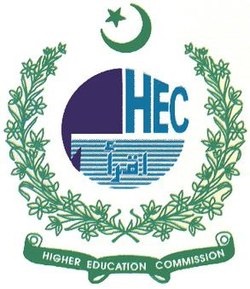The Role of Domestic Institutions for Foreign Direct Investment and Trade in Developing Countries
DOI:
https://doi.org/10.61506/Keywords:
foreign direct investment, trade, developing countriesAbstract
The present research aims mainly investigated various elements responsible to FDI & trade openness including impact on growth rate, as well as quality of institutions in a group of selected developing countries. We test this hypothesis using a linear interaction model applied to 70 developing countries between 1984 and 2022. The FDI growth effect and trade openness is positive, but its monotonic increase with the quality of institution is revealed in the estimation by GMM. Empirical studies suggest that FDI and trade openness can obviously bring positive effects if they were channelled through a high level of political stability and full pledged democracy for promoting economic growth (Hadri & Pane, 2008).
References
Adams, S., & Klobodu, E. K. M. (2016). Financial development, control of corruption and income inequality. International Review of Applied Economics, 30(6), 790-808.
Akuffo-Kwapong, B. N. A. (2023). The Effect of Neoliberal Economic Reforms on Urbanization: The Story of Thirty-Two African Countries (Master's thesis, Georgetown University).
Alguacil, M., Cuadros, A., & Orts, V. (2011). Inward FDI and growth: The role of macroeconomic and institutional environment. Journal of Policy Modeling, 33(3), 481-496.
Atique, Z., Ahmad, M. H., Azhar, U., & Khan, A. H. (2004). The impact of FDI on economic growth under foreign trade regimes: A case study of Pakistan [with comments]. The Pakistan Development Review, 707-718.
Azman-Saini, W. N. W., Baharumshah, A. Z., & Law, S. H. (2010). Foreign direct investment, economic freedom and economic growth: International evidence. Economic modelling, 27(5), 1079-1089.
Balasubramanyam, V. N., Salisu, M., & Sapsford, D. (1996). Foreign direct investment and growth in EP and IS countries. The economic journal, 106(434), 92-105.
Balasubramanyam, V. N., Salisu, M., & Sapsford, D. (1996). Foreign direct investment and growth in EP and IS countries. The economic journal, 106(434), 92-105.
Blomstrom, M., & Kokko, A. (2001). Foreign direct investment and spillovers of technology. International journal of technology management, 22(5-6), 435-454.
Carkovic, M. (2005). Does Foreign Direct Investment Accelerate Economic Growth? Does Foreign Investment Promote Development?
Choong, C. K., Baharumshah, A. Z., Yusop, Z., & Habibullah, M. S. (2010). Private capital flows, stock market and economic growth in developed and developing countries: A comparative analysis. Japan and the World Economy, 22(2), 107-117.
De Haan, J., & Sturm, J. E. (2000). On the relationship between economic freedom and economic growth. European journal of political economy, 16(2), 215-241.
Egger, P., & Winner, H. (2005). Evidence on corruption as an incentive for foreign direct investment. European journal of political economy, 21(4), 932-952.
Falki, N. (2009). Impact of foreign direct investment on economic growth in Pakistan. International Review of Business Research Papers, 5(5): 110-120.
Feltenstein, A., & Iwata, S. (2002). Why is it so hard to finance budget deficits? Problems of a developing country. Journal of Asian Economics, 13(4), 531-544.
Jenkins, C., & Thomas, L. (2002). Foreign direct investment in Southern Africa: Determinants, characteristics and implications for economic growth and poverty alleviation (pp. 1-60). CSAE, University of Oxford.
Khan, M. A., & Khan, S. A. (2011). Foreign direct investment and economic growth in Pakistan: A sectoral analysis.
Khan, M. N. (2019). Institutional Governance, Population Dynamics, and Economic Growth: Insights from a Global Panel. Journal of Business and Economic Options, 2(1), 1-13.
Kobrin, S. J. (2005). The determinants of liberalization of FDI policy in developing countries: a cross-sectional analysis, 1992-2001. Transnational corporations, 14(1), 67-104.
Malikane, C., & Chitambara, P. (2017). Foreign direct investment, democracy and economic growth in southern Africa. African Development Review, 29(1), 92-102.
Nasir, Z. M. (2022). Macroeconomic Factors Shaping Foreign Direct Investment Inflows: Evidence from Pakistan. Journal of Business and Economic Options, 5(2), 29-35.
Ndikumana, L. (2017). Curtailing Capital Flight from Africa. Friedrich Ebert Stiftung. International Policy Analysis. Berlin.
Prufer, P., & Tondl, G. (2008). The FDI-growth nexus in Latin America: The role of source countries and local conditions.
Radu, M. (2015). Political stability-a condition for sustainable growth in Romania?. Procedia Economics and Finance, 30, 751-757.
Sadashiv, K. R. (2023). Foreign Direct Investment Dynamics and Economic Growth in the Case of India. Journal of Business and Economic Options, 6(1), 45-52.
Teng, F. (2017). The Effects of Task-induced Involvement Load on Word Learning and Confidence Judgments Mediated by Knowledge and Regulation of Cognition. Educational Sciences: Theory and Practice, 17(3), 791-808.
Todaro, M. P., & Smith, S. C. (2020). Economic development. Pearson UK.


